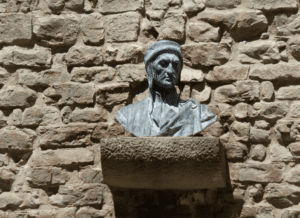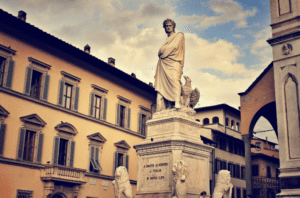Conventionally, we speak of “Italian language” to refer to the national language spoken in Italy, referring to the neo-Latin language based on the variety spoken in Florence, the cradle of Renaissance and Humanism of the Bel Paese. However, what is commonly called “Italian” is nothing but a terminological convention: no Italian citizen actually communicates orally in “standard Italian”.


The Perfect Surrounding
The current linguistic situation of Italy was already clear in all its complexity to Dante Alighieri who, in 1304, wrote in De vulgari eloquentia: If one wanted to calculate the varieties of the vernacular of Italy, the principal ones, the secondary ones, and those hierarchically minor, even in this tiny corner of the world, one would arrive at the thousand varieties of speech, and even beyond.
The Italic dialects
The Italic dialects spoken in our peninsula still enjoy full vitality, although there is an increasingly significant spread of the national language. These dialects, still present throughout the national territory, have influenced the regional varieties (those varieties of Italian in which standard Italian are grafted with clear dialectal traits) of the so-called “standard Italian” (a variety of language that is inspired by the models of literate Italian, a variety of use which seems to enjoy a position of prestige and to be exclusive only to some categories of people such as actors, some radio and TV announcers, etc.).
The Dialect in our Regions
In the overwhelming majority of the Italian regions, the use of dialect is still very much rooted: it is not by chance that it often happens that even immigrants acquire not Italian but a dialectal or a semi-standard form of Italian, demonstrating the role that dialect still plays in the Italian society. It is therefore legitimate to state that in Italy, Italian people grow up learning two different varieties of Italian: the so-called “standard” Italian (which they will use only in extremely restricted areas linked to formal contexts) and the semi-standard Italian (in which the majority of the average educated population has full linguistic competence and which is used in everyday life situations).
Can we therefore define Italians as a country of bilingual speakers?
Before answering, we should know what bilingualism is and who can claim to be fully bilingual and who cannot. One of the first scholars of bilingualism, Leonard Bloomfield (1887-1949), argued that bilingualism is the phenomenon for which an individual is in possession of a perfect communication control over two or more languages. Very often, one of these two languages is the dominant language, also known as the national language, while the other is the dialect spoken in the area in which one is born and grows, which, from a cognitive point of view, is to be considered just like the national language.
Therefore, with this first definition we can arrive at a basic consideration on the subject. Bilingual is not only the individual who masters two, so to speak, “prestigious” linguistic codes (such as English and French): bilingual is also the one who speaks fluently his own national language (like Italian) and the dialect of his region (the Lombard, the Venetian, the Sicilian, etc.). Being bilingual does not depend on how much those languages are spoken in the world, but on how much those languages have co-existed, from a cognitive point of view, within the mind of the subject in question.
However, the issue on whether Italians should be considered bilinguals or not is still lacking a univocal answer.
If you are wondering how different Italic dialects sound like, have a look at this fun video by the Italian comedian Enrico Brignano (particularly, from minute 00:50).
